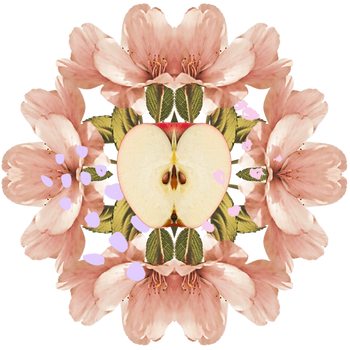Amaranth

A plant of resistance and tenacity. The ultimate survivor, Amaranth was first used by Aztecs in rituals involving food created from the plant. Subsequently outlawed by the Spanish conquerors the plant became a symbol of resistance against the invaders. It survived their repression and continues to be grown across the world today.
The story
Origins
Amaranth was domesticated more than five thousand years ago in central America and the Andes. Drought and disease resistant, the plant became a staple food of the Inca and Aztec empires, cultivated using a sophisticated infrastructure of irrigation canals and terracing.
The Amaranth make-up
It is an agreeably scruffy plant – pendulous tassels hang in ragged clusters, each one bearing myriads of miniature maroon flowers. They are followed by prolific cream, gold or pink seeds, easily 50,000 to a plant, hardly bigger than pinheads and shaped like tiny flying saucers.
The seeds are nutritionally excellent – a complement to cereal grains, containing about a third more protein than wheat but also plenty of essential amino acids that wheat lacks, while at the same time having more fat and less starch.
How the seeds travelled
Long before the Spanish conquest, tzoalli, a sticky dough of amaranth flour and agave syrup was ceremonially moulded into figures representing deities. The idols were eaten communally at religious feasts to ward off disease, for collective purification but especially, so that by ingesting the flesh of the gods, their force and essence would be imparted to believers.
To the invading Spaniards, these rites had an uncomfortable resonance with the Catholic tradition of Holy Communion and amaranth was outlawed. Conquistadors trampled and burned fields and even cut off the hands of people who continued to cultivate and consume the plant.
Bearing fruit
In modern-day Mexico and Peru, amaranth cultivation is officially encouraged. This is promising. Nearly half of the world’s food calories come from just three cereals – wheat, rice and maize, a situation which is bad for nutrition and biodiversity and promotes the spread of pests and diseases between plants concentrated in vast monocultures.
In South America, planting and eating amaranth is seen as a political as well as a nutritional act. For the rest of us, amaranth is exactly the kind of forgotten crop we should add to our diets.
Explore more
Want to delve deeper into the world of trees and plants?
Check out author Jon Drori's beautifully illustrated works, Around the World in 80 Trees and Around the World in 80 Plants - intertwining botany with history, culture and folklore. Both are available from all booksellers or via Jon’s website[https://bit.ly/JonDroriBooks]. Jon has very kindly offered a 25% discount with the voucher code 80JONDRORI.
Listen to original music by Sam Lee, alongside spoken text by Jon Drori created in response to the Amaranth, Iconic Plant and commissioned especially for PoliNations. Narration by Jade Samuels. To listen to the music by itself. click the link further up the page.
Illustrations by Lucille Clerc.









